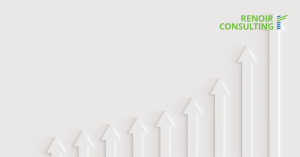At a Glance
- Optimise Supplier Base: Consolidate vendors and leverage spend analysis to significantly cut costs and simplify procurement processes.
- Strengthen Agreements: Renegotiate commercial terms and SLAs to clearly define expectations, enhance supplier accountability, and unlock greater value.
- Enhance Resilience: Use strategic sourcing and localisation to mitigate supply chain risks, reduce lead times, and increase operational agility.
Introduction
This article is the fourth in our six-part series, “Thrive Through Turbulence,” guiding businesses on how to proactively manage procurement amid a volatile business landscape.
Economic instability, shifting market dynamics, and supply chain disruptions challenge businesses today, making procurement excellence a strategic necessity. Are you getting what you’re paying for, at the best price—and do you even need it?
Here are five practical steps leaders can immediately implement to strengthen their procurement function and secure business resilience.
1. Vendor Consolidation to Reduce Cost and Complexity
Too many vendors dilute your buying power, inflate administrative burdens, and drive hidden costs. Consolidating vendors empowers procurement, simplifies operations and strengthens negotiating leverage.
What You Can Do:
- Audit Your Supplier Base: Conduct a detailed review to systematically identify, assess, and eliminate redundant or underperforming vendors that offer little strategic value.
- Centralise Purchasing: Pool your buying volumes across fewer, strategically selected suppliers to leverage scale and negotiate significantly better terms and volume discounts.
- Streamline Vendor Management: Implement clear, consistent vendor management processes and performance-tracking mechanisms to lower administrative overhead and proactively improve supplier relationships and accountability.
What It Unlocks:
Immediate cost reductions, simplified operations, stronger supplier relationships, and enhanced procurement efficiency.
Example:
A major US drilling company saved 20% on materials and supplies cost by making 3 key changes: Implementing a formal RFQ process to ensure competitive bidding and reduced costs, improved integration of supply chain with other functions to inform better procurement decisions, and actively managing and repositioning excess inventory across locations to reduce the need for new purchases, leading to substantial savings. Read the case study.
2. Category Spend Analysis to Unlock Savings Opportunities
Regular spend analysis reveals inefficiencies and opportunities buried within your procurement processes. Uncovering these insights enables more informed decision-making and targeted cost reduction.
What You Can Do:
- Segment and Prioritise Categories: Identify and rank high-spend or critical categories ripe for substantial savings, efficiency gains, and immediate process improvement.
- Benchmark Spend Patterns: Use reliable industry benchmarks and comparative analytics to identify areas of excessive spending, inefficiencies, or opportunities for renegotiation.
- Implement Real-Time Analytics: Gain immediate, dynamic insights into spending trends to rapidly identify, investigate, and address anomalies, overspending, or unauthorised expenditures.
What It Unlocks:
Significant cost savings, enhanced purchasing efficiency, and better-informed procurement decisions.
Example:
Renoir collaborated with a major global steel producer to examine sourcing practices and the spend categorisation. The analysis revealed that current practices did not maximise leverage opportunities and spend was often decentralised. After implementing strategic sourcing practices based on demand analysis and market analysis, 83% of Spend was identified as impactable, leading to new Agreements on 51% of Spend with a 4.3% reduction in annual spend locked into these agreements. Read the case study.
3. Re-negotiation of Commercial Terms and SLAs
Renegotiating existing contracts and service-level agreements (SLAs) can rapidly deliver substantial financial and operational improvements without sacrificing service quality. Renegotiate and make sure you get what you agreed on!
What You Can Do:
- Prioritise High-Impact Contracts: Target contracts with the highest spend, greatest complexity, and largest potential savings first to quickly maximise results.
- Clarify Scope and Expectations: Clearly define terms, responsibilities, and measurable performance metrics to prevent scope creep, disputes, ambiguity, and costly misunderstandings.
- Introduce Performance Incentives: Structure agreements to explicitly reward high quality, innovation, and timely delivery while imposing meaningful penalties for delays or underperformance.
What It Unlocks:
Enhanced supplier accountability, improved service quality, and considerable cost reductions.
Example:
A steel manufacturer established a best-fit contract management system, used contract and contractor consolidation, introduced new vendors, analysed service costs, and implemented audit mechanisms for SLA compliance, resulting in a 10% reduction in spend value from the analysed contracts. Read the case study.
4. Strategic Sourcing to Mitigate Supply Risk
Supply risks have increased considerably. Disruptions can devastate your operations, causing downtime, increased costs and lost customer trust. Strategic sourcing builds resilience into your procurement by proactively diversifying suppliers, strengthening relationships, and securing essential supply lines against unexpected shocks and market volatility.
What You Can Do:
- Diversify Suppliers: Engage multiple qualified sources for critical goods and services to minimise dependency risks and reduce vulnerability to individual supplier failures.
- Conduct Regular Risk Assessments: Proactively identify potential supply chain vulnerabilities through structured assessments, and create actionable mitigation plans to promptly address risks.
- Develop Contingency Plans: Establish clear, well-documented backup plans and pre-qualified alternative sources to swiftly and effectively address potential (geographic) disruptions or unforeseen challenges.
What It Unlocks:
Robust supply chain resilience, significantly reduced operational risk, continuous business continuity, and sustained competitive advantage.
Example:
As part of their Procurement Excellence Project, a major global manufacturer focused on reviewing vendor allocations and introducing the 80:20 rule in vendor allocations, making a conscious effort to avoid excessive reliance on a small number of key vendors and reduce supplier dependency. Read the case study.
5. Localisation or Nearshoring to Reduce Dependency and Lead Times
Reducing geographical distances in your supply chain through localisation or nearshoring shortens lead times, decreases logistical risks, and strengthens overall agility.
- Map Your Supply Chain: Identify strategic opportunities to source closer to operations by analysing supplier locations, transit routes, and proximity to production hubs.
- Evaluate Total Cost: Assess end-to-end cost drivers—transport, tariffs, delays, inventory buffers, and quality risks—beyond just unit price of goods and services.
- Develop Local Partnerships: Build long-term relationships with capable local suppliers to enhance responsiveness, improve service levels, and support faster production turnaround times.
What It Unlocks:
Reduced lead times, decreased dependency on distant suppliers, and greater agility in responding to shifting market dynamics and customer demands.
Conclusion: Buy Smarter, Grow Stronger
More than before, thriving through turbulence demands strategic procurement—not just cost-cutting, but smarter, more informed buying decisions. By consolidating vendors, analysing spend, renegotiating terms, strategically sourcing, and localising supply chains, businesses can significantly strengthen resilience and emerge more competitive.
Procurement excellence ensures that every dollar spent delivers maximum value, positioning your business not only to weather current disruptions but to thrive beyond them.
Renoir Consulting helps organisations worldwide achieve procurement excellence, ensuring long-term resilience and immediate savings.
Let’s collaborate to build your tailored procurement strategy, unlock immediate savings, and ensure your supply chain powers your growth.









